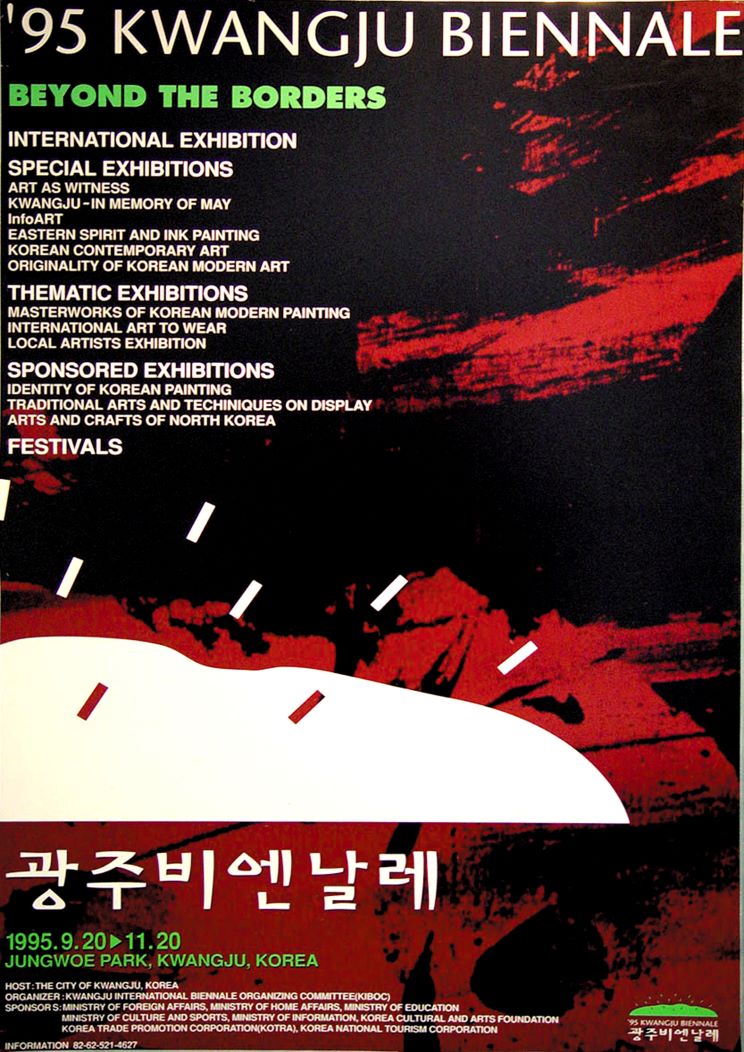
First Gwangju Biennale, Poster, Image provided by ©Gwangju Biennale Foundation
Gwangju Biennale
* Source: Multilingual Glossary of Korean Art. Korea Arts Management Service
Related
-
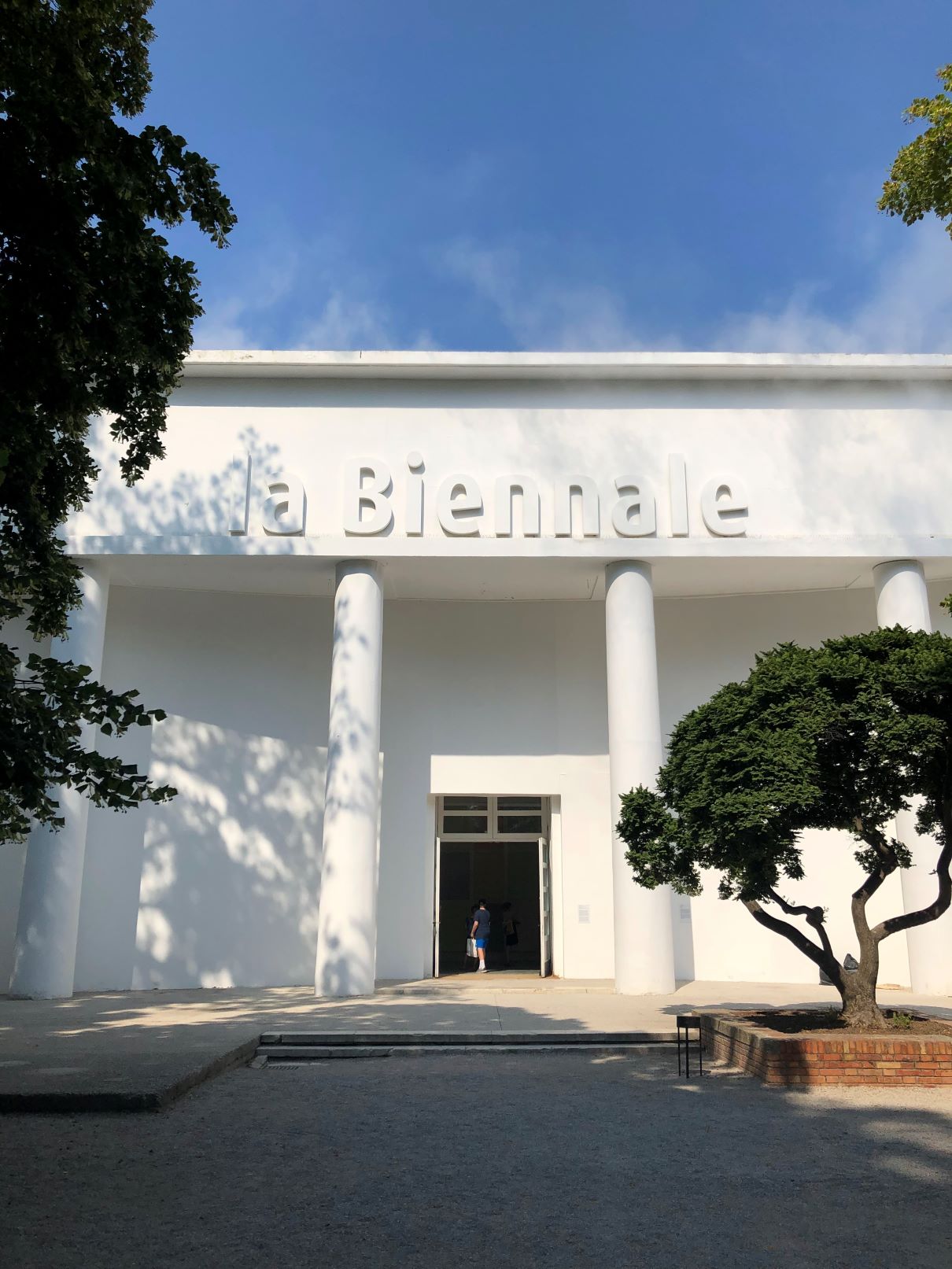
Venice Biennale
The Venice Biennale is an international art exhibition founded in 1895 in Venice, Italy. Its main exhibition, curated by a general director of the biennale, is held at the Arsenale, a former munitions factory, and national pavilions at Giardini Park host exhibitions curated by art directors of each participating country, making them compete against each other. South Korea first participated in the Venice Biennale in 1986 when Ko Younghoon and Ha Dongchul rented a section of the Italian Pavilion. In 1993, Paik Nam June won the Golden Lion award for his work submitted for the German Pavilion. In 1995, thanks to Paik Nam June’s efforts, the Korean Pavilion opened as the twenty-sixth national pavilion. Afterwards, Jheon Soocheon, Kang Ikjoong, and Lee Bul received a special prize at the international art exhibition of the biennale, respectively in 1995, 1997, and 1999. At the 2014 Venice Architecture Biennale, Cho Minsuk was awarded the Golden Lion for his exhibition Crow’s Eye View: The Korean Peninsula. At the art exhibition of the fifty-sixth Venice Biennale in 2015, Im Heungsoon won the Silver Lion for his documentary film Factory Complex. The Venice Biennale serves as a criterion that leads contemporary art or art market trends.
-
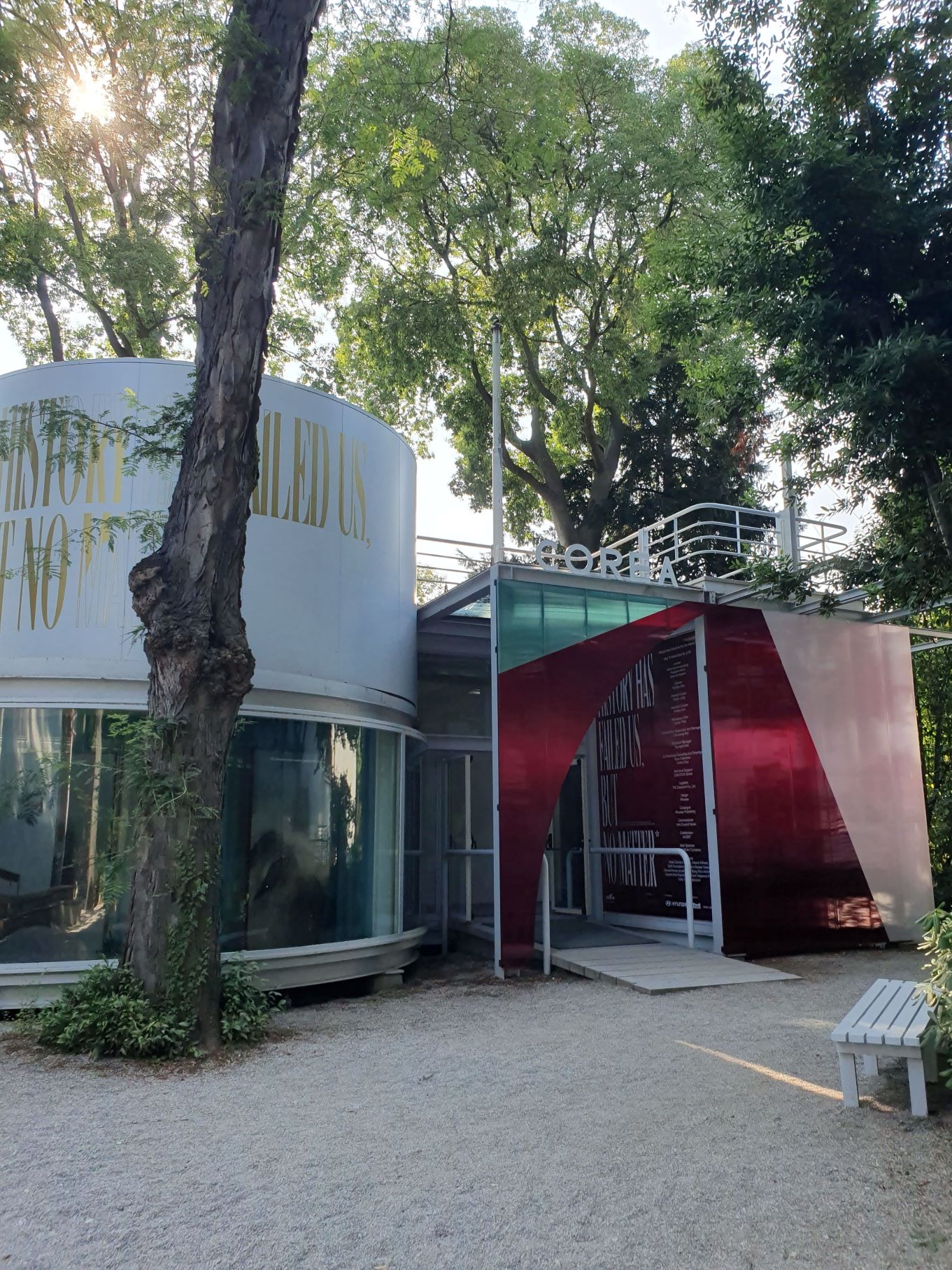
Venice Biennale Korean Pavilion
The Venice Biennale is an international art festival that began in 1895, and the Korean Pavilion opened in 1995 as the 26th national pavilion. The establishment of the Korean Pavilion was the result of government-level support, corporate donations, and the activism of artists after Paik Nam June’s work was exhibited in the German Pavilion and won the Golden Lion Award. The Pavilion was allocated space in Castello between the German and Japanese Pavilions. It was built primarily of glass and metal and based on the design of architect Kim Seokchul.
Find More
-
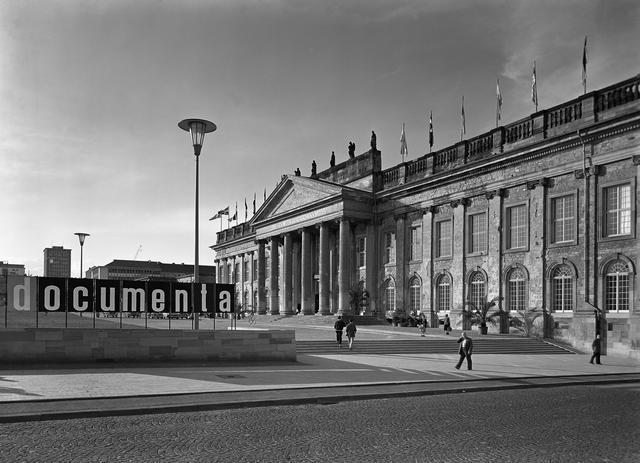
Kassel Documenta
Kassel Documenta is an international contemporary art event held every five years in the Kassel region located in the center of Germany. The first edition was held in 1955 at the suggestion of Arnold Bode, an artist and professor at Kassel Academy, as an event accompanying the German national garden show (Bundesgartenschau), which was held throughout Germany. In its early years, Kassel Documenta tried to promote Germany as a cultural nation by focusing on works by German artists and revisit avant-garde art that Hitler had suppressed in an effort to bring peace and stability to the country after World War II. Afterwards, artists from all around the world were allowed to participate, a judging panel of experts was formed, and a new art director was appointed each time to hold a thematic exhibition. Unlike open call biennales led by the state, Kassel Documenta is hosted by a non-profit organization and its organizing committee discovers and selects artists and works. Each edition of Kassel Documenta is characterized by the discussion of new discourses on contemporary art and the pursuit of ethnic and national diversity. Artworks are installed throughout the Kassel region with the Fridericianum and Documenta Halle as the main exhibition halls. In 1977, Paik Nam June broadcasted the Live Satellite Telecast in real time at the opening of Documenta 6, and Yook Keunbyung installed The Sound of Landscape + Eye for Field in the Fridericianum at Documenta 9 in 1992. The Kassel Documenta is a leading international art event that highlights undiscovered sites of contemporary art and presents a vision of the future.
-
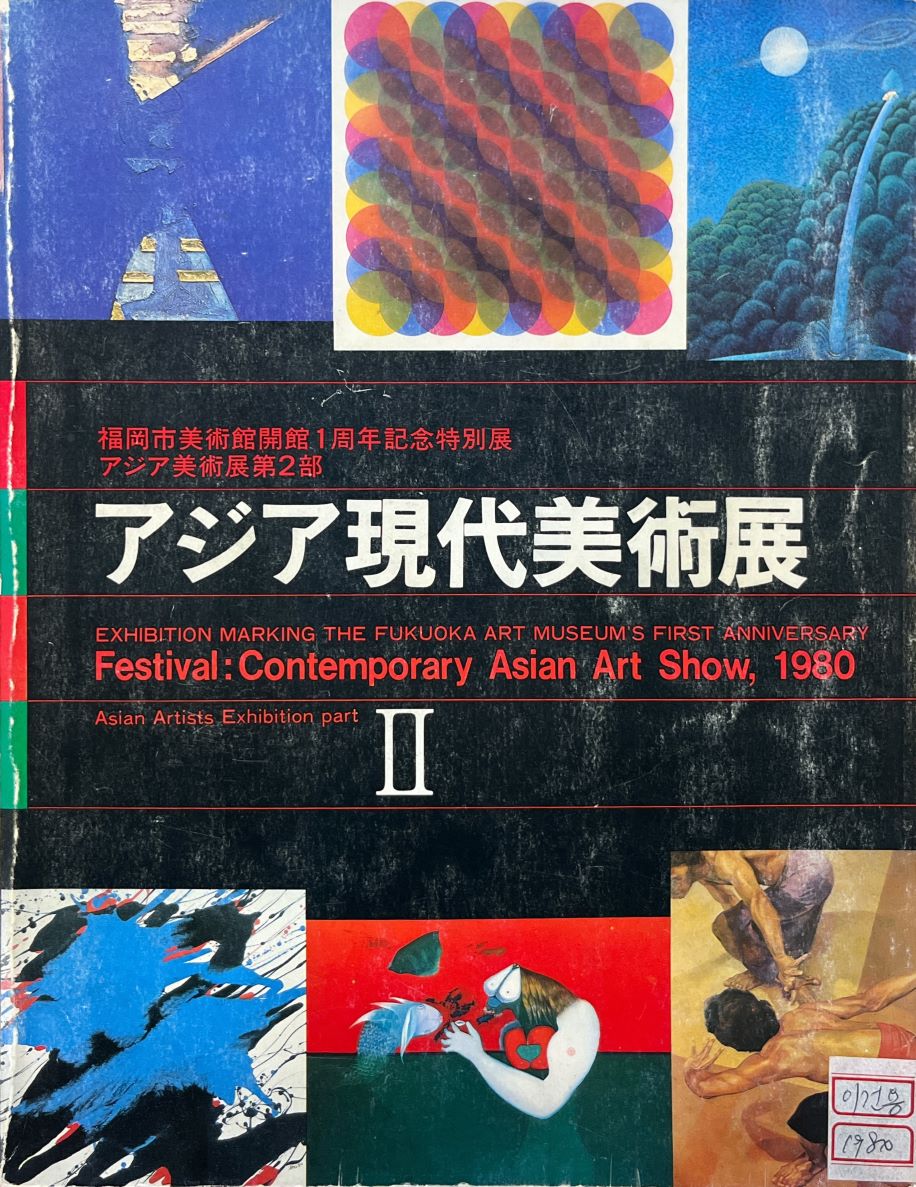
Asian Art Show
The Asian Art Show, Fukuoka was an international exhibition held every four to five years from 1980 through 1994 at Fukuoka Art Museum in Japan to introduce modern and contemporary art from Asia. The first edition of the exhibition presented 417 works by 417 artists and was divided into two sections with the first section introducing modern art from China, India, and Japan and the second section showcasing contemporary art from thirteen Asian countries. Twenty-seven Korean artists participated, including Kim Tschang-yeul, Park Seo-Bo, Yun Hyongkeun, and Shim Moonseup, and Lee Yil wrote about Korean artists of the 1970s for the catalogue. The second edition held in 1985 featured 386 works by 287 artists mainly consisting of young artists in their forties or younger from thirteen countries. A special section “Art of Bali” was staged as well. Twenty-four Korean artists, such as Kim Jangsup, Lee Inhwa, and Kim Kwansoo, took part in the second edition, and Yu Jun-sang wrote an essay about Korean contemporary art in the 1980s. The second edition was re-held at the National Museum of Contemporary Art, Korea (now MMCA) under the title of Contemporary Asian Art Show, Seoul, 1986. From the third edition held in 1989, artists began to be selected not based on the recommendations by participating countries but by curators. Organized under the theme of “Symbolism in Everyday Life,” the third edition presented 233 works by 104 artists from fifteen countries. From Korea, Lee Sukju, Min Joungki, Oh Sufan, Oh Wonbae, Shin Hyunjung, Yun Myeongjae, and Yun Seokkoo participated, and Yu Jun-sang wrote an essay for the catalogue. Unlike the previous editions that held Asian art symposiums, the third edition hosted a print workshop to encourage exchanges among artists. This edition was also re-held at the MMCA under the title of Seoul Olympics Commemorative Festival: Asian Art Show, Seoul. The fourth edition in 1994 was organized focused on the social and political theme “Realism as an Attitude.” As an attempt to add depth to the exhibition, the number of artists was drastically reduced to forty-eight artists from eighteen countries. A total of 123 works were exhibited. Hong Sungmin, Cho Duckhyun, and Choi Jeonghwa participated as Korean artists, and Choi Taeman wrote an essay regarding Minjung art of Korea for the catalogue. With the active participation of Asian countries including Korea, the Asian Art Show played a role in promoting Asian art worldwide in the 1980s and 1990s. The research results and collected works of this exhibition led to the opening of the Fukuoka Asian Art Museum in 1999. The Fukuoka Asian Art Museum has been holding the Fukuoka Asian Art Triennale, which succeeded the Asian Art Show, every three years since 1999.






